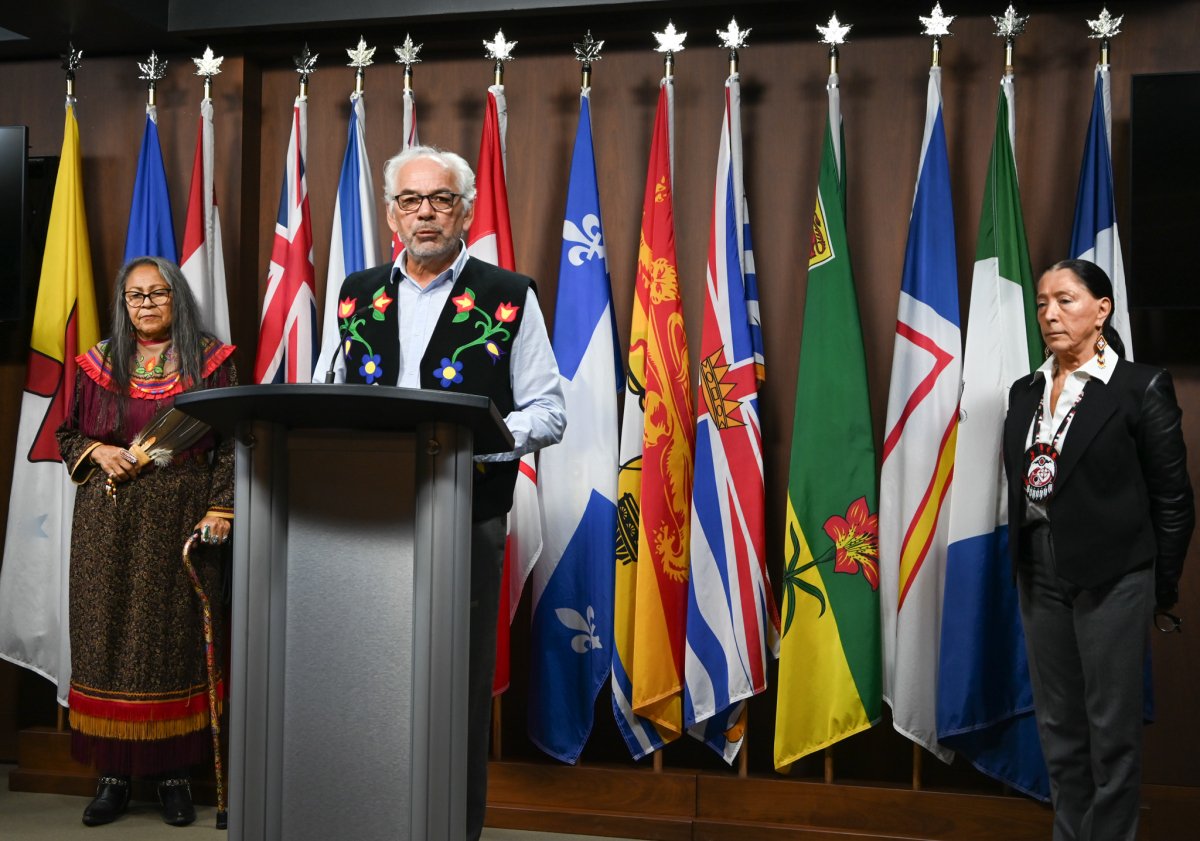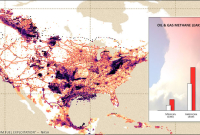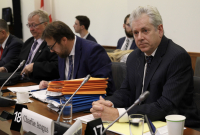Support strong Canadian climate journalism for 2025
The Assembly of First Nations (AFN) on Wednesday released its National Climate Strategy, putting a First Nations lens on the climate crisis by focusing more on language and cultural revitalization and a reciprocal relationship with the natural world.
Part of that climate lens includes the de-emphasis of “technological” and “market-based” solutions to the climate crisis, according to the AFN strategy.
The AFN is more concerned about addressing the root cause of the climate crisis, which is an extractive mentality centred on taking without giving back to the world around us, Graeme Reed, a strategic adviser to the AFN, told Canada’s National Observer.
“Part of what we are trying to do is really just relearn what it means to follow those original instructions,” he said.
That’s why investing in language and hunting camps, intergenerational knowledge-sharing, and meeting infrastructure and social needs take a central role in climate solutions for the AFN.
“Our knowledge-keepers have the answers, we need to reach out to them to be part of this discussion because they know the solution,” Joanna Bernard, interim national chief of the AFN, said at a press conference.
The plan takes a holistic approach to the climate crisis, with a central focus on First Nations’ knowledge systems, health, languages, cultures and spiritualities.
The climate strategy contains six other priority areas:
- First Nations jurisdiction and inherent right to self-determination.
- Address capacity needs to support First Nations governance and climate leadership.
- Leverage the First Nations climate lens to reform legislation, policy and programs.
- Equip First Nations to mitigate, prevent and recover from emergencies.
- Close the infrastructure gap.
- First Nations’ self-sufficiency in food, water and energy.
“I think First Nations are in the unique position to bring guided solutions in terms of the climate challenge,” Ghislain Picard, AFN regional chief for Québec-Labrador, said at the press conference.
However, the climate strategy stops short of calling for a complete end to fossil fuels.
Some First Nations organizations and First Nations are invested in the fossil fuel industry, leading to challenging decisions and discussions for First Nations leadership, Picard said.
He said he isn’t going to take a side in the debate, but it’s the AFN’s responsibility to create the space for those difficult discussions to take place. The key point is that First Nations are involved in all discussions from the beginning of all processes, whether it’s climate mitigation or resource development, Picard added.
“AFN’s responsibilities are about that: How to ensure inclusiveness so that everybody can be heard,” he said.
Several First Nations are looking to expand their role in the oil and gas industry, including the Haisla Nation, Metlakatla First Nation, and Nisga’a Nation, which are seeking to develop Cedar LNG in Kitimat, B.C. and Ksi Lisims north of Prince Rupert, B.C.
Last year, TC Energy also inked a deal to give 16 First Nations a 10 per cent equity stake in the Coastal GasLink pipeline. All of those nations sit along the route.
Matteo Cimellaro / Canada’s National Observer / Local Journalism Initiative
A previous version of this article incorrectly stated that the First Nations Climate Initiative was involved in developing the Cedar LNG project in Kitimat, B.C.







Comments